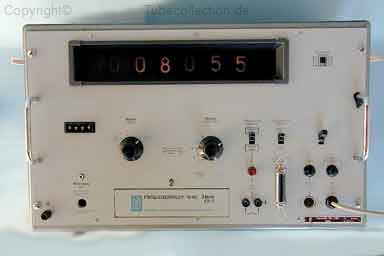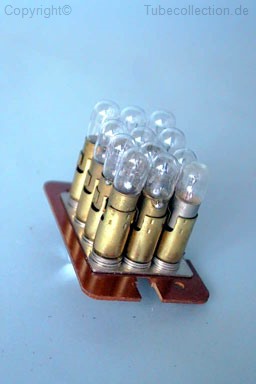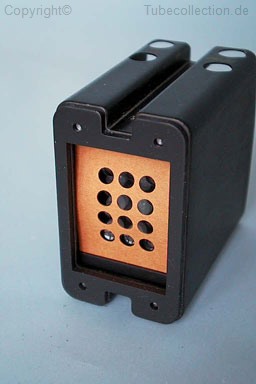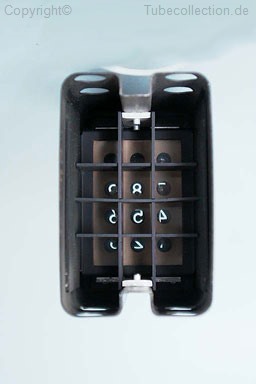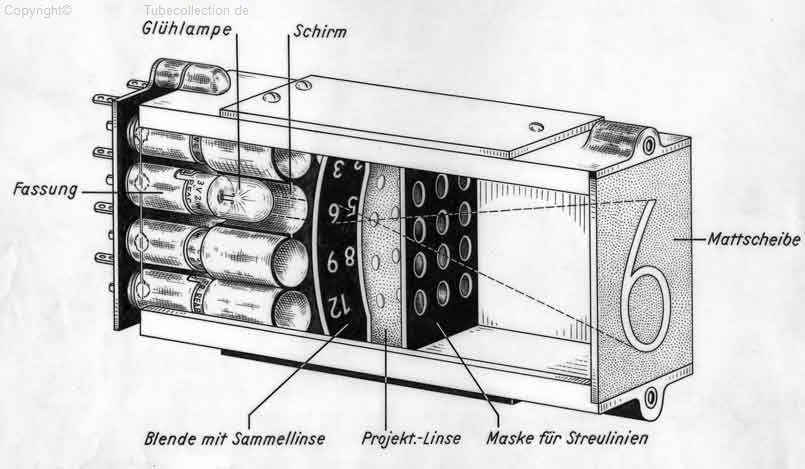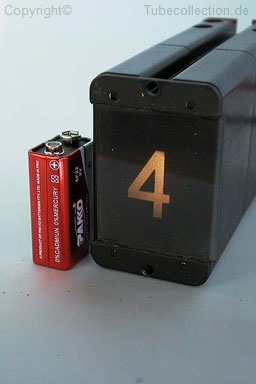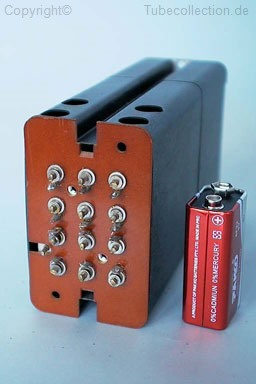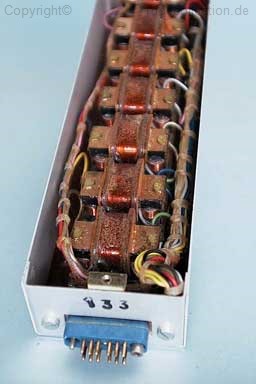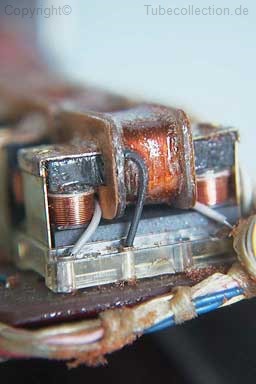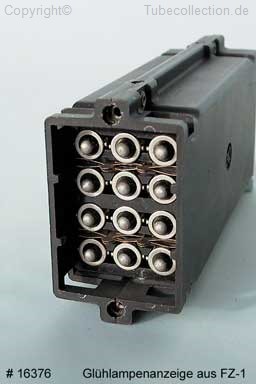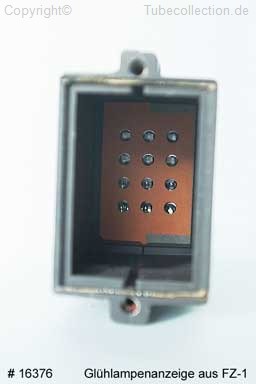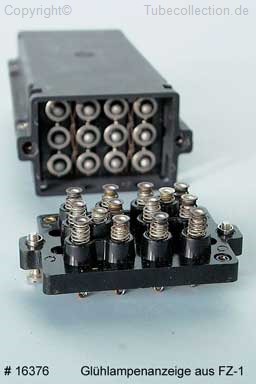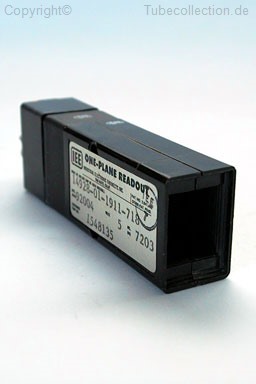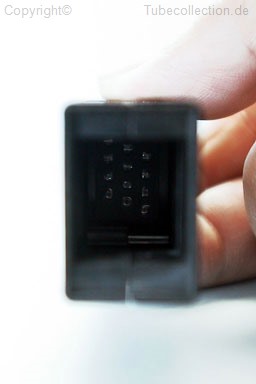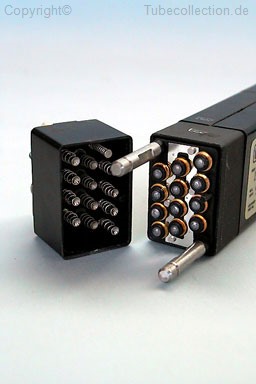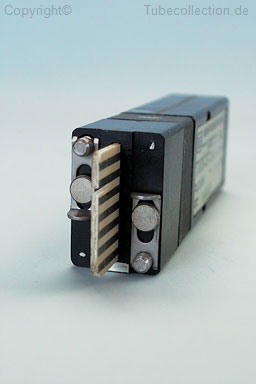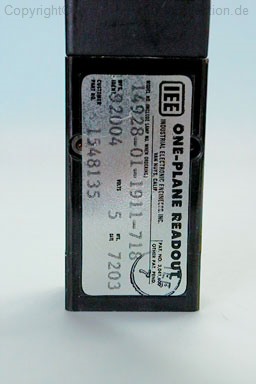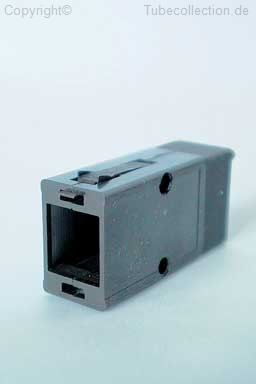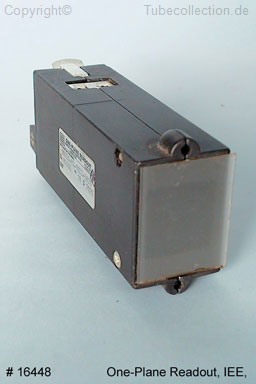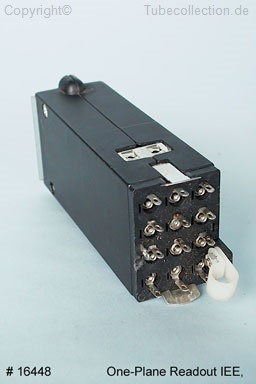|
Die nachfolgende Einheit ist ein Zifferndisplay auf Basis von Glühlampen. Vorn ist eine Mattscheibe, hinten eine Glühlampengruppen. Jedes Lämpchen steht für eine Ziffer. Mittig dazwischen befinden sich optische Linsen mit den Ziffern drauf. Das Licht der Glühlampe geht dort hindurch und bildet die Ziffer auf der matten Frontscheibe vergrößert ab. Diese Anzeige wird im Frequenzmesser FZ-1 der Firma Wandel & Goltermann aus dem Jahre 1965 verwendet.
Das Ein- und Ausschalten der entsprechenden Glühlampen erfolgt über so genannte Transduktoren. Diese werden von einer Elektronik über Germanium-Transistoren gesteuert. Ein Transduktor ist eine steuerbare Drossel, ein magnetischer Verstärker. In dieser Anwendung fungiert er als magnetischer Schalter. Wird die magnetische Feldstärke H größer, geht der Kern in die Sättigung und das Feld wird nicht mehr verstärkt. Dies kann man durch eine Vorsättigung mittels einer Hilfswicklung erreichen, welche durch einen Gleichstromfluss die Vorsättigung regelt. So variiert ein recht kleiner Steuerstrom die Induktivität und damit den Scheinwiderstand der Spule. Eine seriengeschaltete Glühlampe kann so in ihrer Helligkeit geregelt werden. Es liegt die Vermutung nah, dass der Kaltwiderstand der Glühlampen im Einschaltzustand für die Germanium -Transistoren zu niedrig ist und quasi einen Kurzschluss darstellt. Weitere Details zu Transduktoren siehe:
http://www.mikrocontroller.net/topic/100457 |
The following unit is a character display based on incendescent lamps. In front is a matt screen, behind an array of incendescent lamps. Each lamp stands for a singele character. Between the lamps and the matt screen are optical lenses with the characters on it. The light of the lamps passes the lens and displayes the the character on the screen. This kind of diplay was used in the german frequency counter FZ-1 made in 1965 by Wandel & Goltermann. The switching of the lamps wasdone by so called "transductors". They where driven by an electronic with germanium transistors. A "transductor" is some kind of controllable magnetic amplifier. In this application it works as a switch. Increases the magnetic field strengh, the core satturates and the field strengh will no longer be amplified. A pre saturation can be regulated by a separate coil driven with rectified current. By this way a small ammount of current variates the inductivity and the impedance of the coil. The brightness of the lamp, applicated in series, can be regulated in such way. I suggest that the cold resistance of the lamps is for the germanium transistors to low when they are switched on and that might cause some kind of shortage to the transistors. Further details about "transductors" see links left.
|
